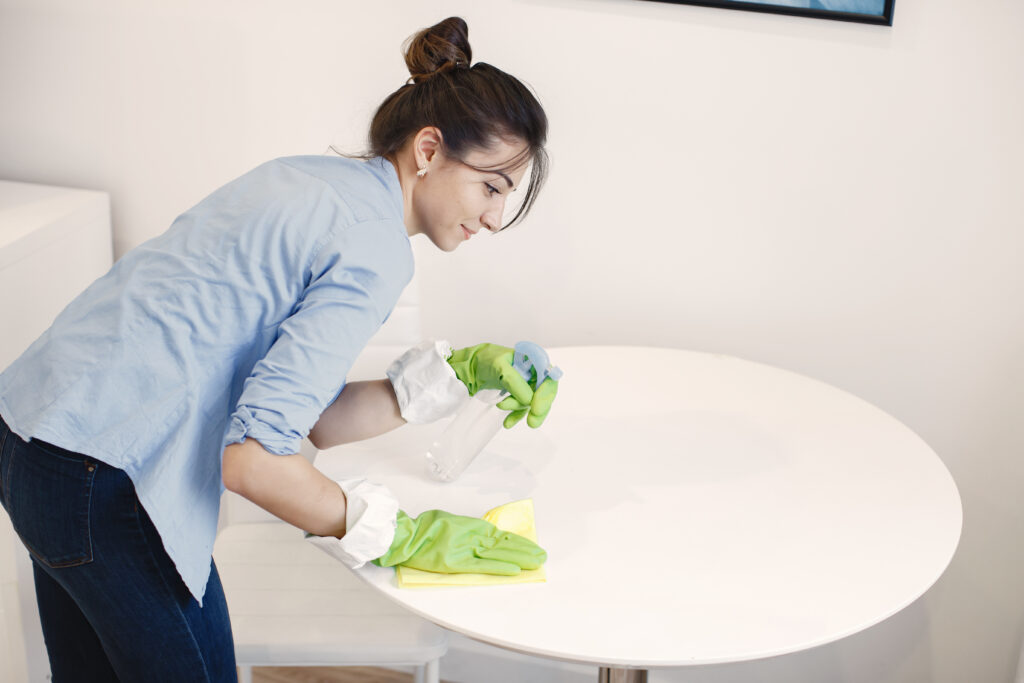Sticky residue on plastic can be a nuisance, especially if it’s difficult to remove. Whether it’s from a sticker, adhesive tape, or food residue, it can be frustrating to try to get it off. Fortunately, there are several effective methods to remove sticky residue from plastic, without causing any damage to the material.
One of the easiest ways to remove sticky residue from plastic is by using rubbing alcohol. Simply apply a small amount of rubbing alcohol onto a cloth or cotton ball and gently rub the affected area. The alcohol will break down the adhesive, making it easier to wipe away. For tougher residue, you can try using a plastic scraper or credit card to gently scrape away the residue before applying the rubbing alcohol.
Another effective method to remove sticky residue from plastic is by using baking soda and water. Mix a small amount of baking soda with water to form a paste. Apply the paste onto the affected area and let it sit for a few minutes. Then, use a soft-bristled brush or cloth to gently scrub the residue away. This method is particularly effective for removing food residue or other organic matter that has stuck to the plastic surface.
What are Sticky Residues
Sticky residues are a common problem that can occur on plastic surfaces. They are often caused by adhesive residue, food, grease, or other substances that have been left on the surface for an extended period. Sticky residues can be difficult to remove, and if left untreated, they can attract dirt and dust, making the surface even more difficult to clean.
One of the most common types of sticky residue is adhesive residue. This can be left behind by stickers, labels, or tape that have been removed from a plastic surface. The residue can be sticky and difficult to remove, and if left untreated, it can attract dust and dirt, making the surface look dirty and unappealing.
Food and grease are another common cause of sticky residues on plastic surfaces. These substances can be difficult to remove, and if left on the surface for an extended period, they can become hardened and even more challenging to remove. This can be a problem in the kitchen, where plastic containers and utensils are frequently used.
To remove sticky residues from plastic surfaces, a deep clean is often necessary. This may involve using a cleaning solution, such as vinegar or rubbing alcohol, to break down the sticky residue. Scrubbing the surface with a soft-bristled brush can also help to remove the residue. It is essential to rinse the surface thoroughly after cleaning to remove any remaining residue and cleaning solution.
Methods to Remove Sticky Residue from Plastic
When it comes to removing sticky residue from plastic, there are several methods that can be used. Depending on the type of residue and the plastic surface, some methods may be more effective than others. In this section, we will discuss two main methods: using household items and using commercial products.
Using Household Items
One of the most common ways to remove sticky residue from plastic is by using household items. Here are some methods that can be used:
- Warm Soapy Water: This is a simple and effective way to remove sticky residue from plastic. Simply mix warm water and dish soap in a bowl and use a sponge or cloth to scrub the plastic surface.
- Rubbing Alcohol: Rubbing alcohol can be used to dissolve sticky residue from plastic. Apply some rubbing alcohol on a clean cloth and rub the plastic surface until the residue is removed.
- Baking Soda: Baking soda can be used to make a paste that can remove sticky residue from plastic. Mix baking soda and water to make a thick paste and apply it on the plastic surface. Let it sit for a few minutes and then scrub it off with a sponge or cloth.
Using Commercial Products
In addition to household items, there are also several commercial products that can be used to remove sticky residue from plastic. Here are some examples:
- Goo Gone: Goo Gone is a popular commercial product that can be used to remove sticky residue from plastic. Simply apply it on the plastic surface and let it sit for a few minutes. Then, wipe it off with a clean cloth.
- WD-40: WD-40 is another product that can be used to remove sticky residue from plastic. Spray it on the plastic surface and let it sit for a few minutes. Then, wipe it off with a clean cloth.
- Professional Cleaning Services: If the sticky residue is particularly stubborn or if the plastic surface is delicate, it may be best to seek the help of a professional cleaning service. They have the expertise and equipment to safely remove the residue without damaging the plastic surface.
Preventing Future Sticky Residue
To prevent future sticky residue on plastic surfaces, there are a few things you can do. First, try to avoid using harsh chemicals or cleaners that can damage the plastic surface. Instead, use mild soap and water to clean the surface, or use a specialized plastic cleaner that is designed for the specific type of plastic you are cleaning.
Another way to prevent sticky residue is to avoid placing hot or sticky items directly on the plastic surface. Use coasters or placemats to protect the surface from heat and spills. If you are using plastic containers for food storage, make sure to use containers that are specifically designed for food storage and are made from food-grade materials.
Additionally, if you are moving in or out of a space, make sure to properly clean all plastic surfaces before leaving. This will help to prevent any residue from building up over time and becoming difficult to remove. Use a mild soap and water solution or a specialized plastic cleaner to clean all surfaces thoroughly.
Finally, consider using a protective coating on plastic surfaces to help prevent future buildup of sticky residue. There are a variety of protective coatings available, including spray-on coatings and protective films. These coatings can help to repel dirt and grime, making it easier to clean the surface and prevent sticky residue from building up.
By following these tips, you can help to prevent sticky residue from building up on your plastic surfaces, keeping them looking clean and new for years to come.
Conclusion
In conclusion, there are several effective methods to remove sticky residue from plastic. One can use common household items such as vinegar, baking soda, and rubbing alcohol to clean the surface. Alternatively, there are commercial products available that are specifically designed for this purpose. It is important to test any cleaning solution on a small, inconspicuous area of the plastic first to ensure that it does not cause damage or discoloration.
When using household items, it is recommended to mix them with water in the correct proportions to avoid damaging the plastic. Additionally, one should use a soft cloth or sponge to avoid scratching the surface. For tougher stains, one can use a plastic scraper or a toothbrush to gently scrub the area.
Overall, it is important to tackle sticky residue as soon as possible to prevent it from becoming more difficult to remove. With the right tools and techniques, anyone can successfully clean sticky residue off plastic surfaces.
Frequently Asked Questions
How can I remove sticky residue from plastic without using rubbing alcohol?
Rubbing alcohol is a common solution for removing sticky residue from plastic, but it is not always the best option. There are several other methods that can be used, such as using vinegar, baking soda, or even peanut butter. These methods are often effective and can be gentler on the plastic surface.
What is the best adhesive remover for plastic?
There are many adhesive removers available on the market, but the best one for plastic will depend on the type of adhesive and the plastic surface. Some popular options include Goo Gone, Krud Kutter, and WD-40. It is important to read the label carefully to ensure that the adhesive remover is safe to use on plastic.
How do I remove sticky tape residue from plastic?
Sticky tape residue can be difficult to remove from plastic, but there are several methods that can be effective. One option is to use a hairdryer to heat the tape residue, making it easier to peel off. Another option is to use a solution of warm water and dish soap to loosen the adhesive. A plastic scraper or credit card can be used to gently scrape off the residue.
Is there a natural way to remove sticker residue from plastic?
Yes, there are several natural methods for removing sticker residue from plastic. One option is to use a mixture of baking soda and coconut oil to create a paste, which can be applied to the residue and wiped away with a cloth. Another option is to use a solution of vinegar and water to loosen the adhesive.
How can I remove sticky label residue from plastic without scratching it?
To remove sticky label residue from plastic without scratching it, it is important to use a gentle method. One option is to use a solution of warm water and dish soap to loosen the adhesive, and then gently scrape it off with a plastic scraper or credit card. Another option is to use a mixture of baking soda and coconut oil to create a paste, which can be applied to the residue and wiped away with a cloth.




